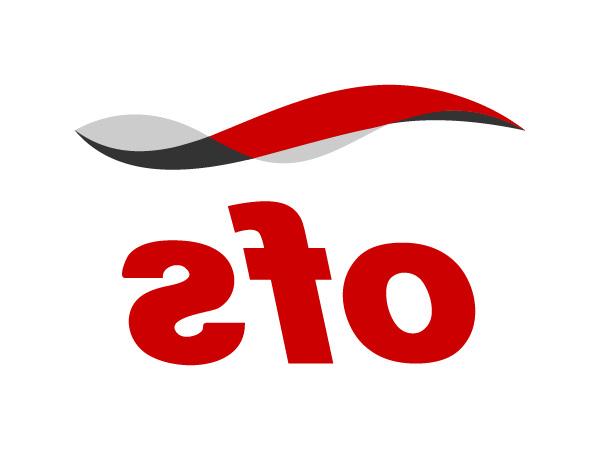Short reach data center and enterprise networks typically use multimode optical fiber to connect network equipment. Multimode fiber has several advantages over other alternatives such as copper and single-mode optical fiber, providing the most cost effective, high capacity link over the short reach distances typically encountered in these applications. It has significantly more bandwidth, or information carrying ability, than copper, while enabling the use of low cost VCSEL-based optics that are not designed for the much smaller core in single-mode fiber. Multimode fiber links continue to be more economical than single-mode fiber for short reach applications due to the cost of the optics. Learn more about single mode vs multimode fiber.
OFS is a leader in the multimode fiber industry, beginning with its roots in AT&T Bell Labs. OFS played a key role in the development of laser optimized OM3 and OM4 multimode fibers in the late 1990s and early 2000s, and were critical in the development and standardization of OM5 wide band multimode fiber.
One of the most important multimode fiber parameters is bandwidth, which defines the information carrying capacity of the fiber. OFS has led the way in developing and standardizing new and innovative ways to accurately provide fiber bandwidth values that are consistent with observed system performance. This paper explains multimode fiber bandwidth, how it is measured, and how it relates to the fiber’s actual performance.
Bandwidth determines the amount of signal dispersion a pulse of light experiences as it propagates through the fiber. Bandwidth measurement is sensitive to both the launch and receive signal. As a result, there are several different designations for bandwidth, as well as different ways to measure the bandwidth of a multimode fiber. It is important to understand how bandwidth is determined and which bandwidth measurement is appropriate for use in today’s laser applications.
How Multimode Fiber Works
In multimode fiber, light is carried over a number of different paths, or modes. An ideal graded index multimode fiber will compensate for the different path lengths by slowing down the modes that travel in shorter paths near the center of the core (figure 1, red), while allowing light that travels further (figure 1, green) to move more quickly.

In an ideal fiber, all the modes arrive at the receiver at the same time. In reality, the compensation is not perfect and modes arrive at slightly different times causing pulse spreading. This spreading is called modal dispersion, and is inversely proportional to bandwidth.
Modes are transmitted in pulses of light through the multimode fiber. Because the fiber doesn’t perfectly compensate for the travel time through the link, the pulse widens (Figure 2).


If the pulses of light are too close together (higher transmission rate) or if the modal/chromatic bandwidth of the fiber is low, the pulses mix together and make it impossible for the detector to resolve the signal (Figure 3).
The spreading out (dispersion) of the pulse is caused by two primary factors, modal dispersion and chromatic dispersion. Chromatic dispersion occurs because multimode light sources (VCSEL’s) do not emit light at a single wavelength. Longer wavelengths travel at a slightly faster speed, causing the pulse to spread out. Chromatic dispersion of a multimode fiber is a function of the fiber’s composition, and while it varies in magnitude with wavelength, it is relatively similar in all multimode fibers.
Modal dispersion is controlled by the refractive index profile of the fiber. The fiber design is intended to compensate for the different distance each mode travels, but small imperfections in the fiber result in some pulse spreading. The amount of this spreading limits how closely the pulses can be spaced and, in turn, the number of bits that can be transmitted in a given time period. Modal bandwidth measures the quality of a fiber’s index profile, with higher bandwidth reflecting higher quality fiber.


Overfilled Launch (OFL) Bandwidth
Prior to 1998 the majority of multimode fiber transmission systems used Light Emitting Diode (LED) sources. These sources flooded the multimode fiber with light, “overfilling” it. In other words, the light source completely filled all the mode paths available in the fiber (figure 4). Since each mode was equally filled, bandwidth performance was equally dependent on each mode, with a given fiber exhibiting uniform, repeatable performance independent of the LED used. Overfilled bandwidth, sometimes referred to as overfilled modal bandwidth (OMB), quantified the information carrying capacity of a multimode fiber for all LED sources, since they provided a consistent launch. LED sources were typically used for lower speed (<1Gb/s) applications because of chromatic dispersion limitations due to the wide spectral width of LED sources versus laser sources.

Effective Modal Bandwidth (Laser Bandwidth)
With the advent of 1 and 10 Gb/s applications, Vertical Cavity Surface Emitting Laser (VCSEL) light sources were introduced. Because the VCSEL sources had narrower spectral widths than LEDs, chromatic dispersion was greatly minimized. However a new problem arose. VCSELs did not provide uniform light over the entire multimode core. Instead, the launch was “underfilled”, and not all modes were equally excited (Figure 5). Launches vary from VCSEL to VCSEL, so the bandwidth of one VCSEL – fiber link may not be the same when another VCSEL is used with the same fiber. This meant that the overfilled bandwidth (OMB) value did not accurately reflect the system performance of VCSEL based sources. As a result, a new means of determining laser based bandwidth was created.
Differential mode delay (DMD) was developed to measure the Effective Modal Bandwidth (EMB), often referred to as “laser bandwidth” of multimode fibers. In DMD testing, narrow, high-powered laser pulses are transmitted through the fiber in 1 or 2 micron steps across the entire core of the fiber. Only a few modes are excited at each step, and their relative arrival times are recorded (figure 6). The DMD of the fiber is the difference between the earliest and the latest arrival times of all modes at all steps. The right DMD plot on Figure 6 shows the nearly perfect alignment of the pulses, indicating a low DMD value of an OM4 fiber; while the left plot shows some misalignment, enough to downgrade the fiber to OM3 bandwidth.
TIA and IEC standards allow two ways to use DMD test results to verify laser bandwidth: 1) the DMD Mask Method, and 2) the EMBc Method. Both methods require DMD testing — the difference lies in how the data is used and interpreted. The DMD Mask Method is a straightforward process that directly compares DMD test results against a set of specifications (called templates or masks) to see if the fiber has the necessary performance. It is a direct approach – if the fiber passes these DMD requirements, then it complies with the standards.
The EMBc method takes the DMD results and matches them against a set of theoretical “weighting functions” that are intended to represent the possible radial launch power distributions of all compliant VCSELs. The DMD results are combined mathematically with each of the 10 weighting functions. This produces 10 different calculated EMB values. The lowest value (called minEMBc) is then multiplied by a factor of 1.13 to obtain the fiber’s EMB value. If EMB is ≥ 4700 MHz-km, the fiber meets OM4 requirements, while an EMB value ≥2000 MHz-km meets the OM3 specification. It is important to note that the EMBc value does not necessarily reflect the link performance obtained with all VCSELs. Instead, it represents the worst expected performance of the 10 theoretical VCSELs used to simulate the manufactured VCSEL population. In some cases, the actual performance of a given link may be much better than the EMBc value would indicate.
OFS uses both the DMD and EMBc method to classify their LaserWave® FLEX 550 (OM4) and LaserWave FLEX 300 (OM3) fibers, providing robust verification to industry standards worldwide.
OM5 Multimode Fiber and Wavelength Division Multiplexing
Fiber bandwidth is also dependent on the transmission wavelength. Laser optimized OM3 and OM4 multimode fibers were designed and optimized for maximum bandwidth at 850nm operation. At higher and lower wavelengths, bandwidth diminishes.
To maintain higher bandwidth performance over a broader range of wavelengths, OM5 wide band multimode fiber was introduced. OM5 fiber takes advantage of wavelength division multiplexing (WDM) transmission protocols such as BiDi and SWDM4™ transceivers. These devices transmit multiple wavelengths over a single multimode fiber to increase data rates without having to use more fibers. This is the same technology used with single-mode in CWDM and DWDM systems.
Industry standards have adopted OM5 as a recognized multimode fiber, capable of supporting 100Gb/s transmission using 25Gb/s streams over four wavelengths operating in the 850-950nm range. TIA-492AAAE was the first standard for wide band multimode fiber, published in June 2016. OM5 was then added to the TIA cabling standard, TIA-568.3-D. International standards followed, with publication of the IEC-60793-2-10 multimode fiber standard, and the November 2017 release of the ISO/IEC 11801-1 cabling standard. TIA-492AAAE and IEC 60793-2-10 contain EMB and OMB specifications at 850nm and 953nm, as well as EMB performance guidelines over the 840-953nm range for use by optical component manufacturers in the design of their transceivers.
OFS’s LaserWave WideBand fiber meets and exceeds both TIA and IEC requirements for OM5 wide band fiber. It supports current WDM applications, including BiDi and SWDM4 links, and is designed to support future generations of WDM products.
Work has begun in an IEEE 802.3 Next Generation Multimode Fiber Study Group that is investigating the development of an Ethernet standard that will support 200 and 400Gb/s Ethernet using fewer multimode pairs. This group will evaluate the inclusion of WDM solutions into Ethernet standards.
These solutions provide the next step forward in the information carrying capacity of an individual multimode fiber by increasing the number of wavelengths in a link from one to as many as four in today’s applications. In the future, tighter wavelength spacing between channels may be utilized to further increase capacity.
Conclusions:
Multimode fiber continues to evolve, supporting the latest network speeds in enterprise and data center networks. Multimode technology has maintained its ability to provide the most cost effective short reach links through a combination of fiber and optical component development that takes advantage of technology advances. Fiber bandwidth is a critical component of this equation.
There are two different modal bandwidth measurements for different types of light sources. Old, legacy LED based systems, slower than 1Gb/s, use overfilled bandwidth (OFL). Newer laser based VCSEL systems use effective modal bandwidth (EMB) to determine the performance of a multimode fiber. OFL cannot be used to determine the laser based performance, or EMB, of a fiber. That determination must be done using DMD and either applying a set of masks, or calculating an EMB based on the 10 weighting functions. For today’s laser based systems, EMB is the critical bandwidth parameter, not OFL.
New standards have been developed for next generation multimode WDM fibers that have EMB specified over a wavelength range. Optical solutions using multimode WDM are available, and IEEE is beginning to look at short reach multimode solutions incorporating this new technology.
This article originally appeared in Network Telecom Magazine.
Learn more about our Multimode Fibers.
John Kamino, RCDD
Eileen Zhang


